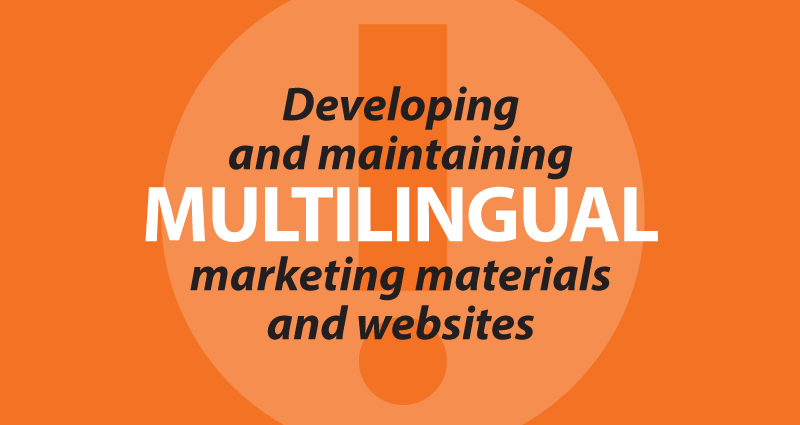
Language lessons
In many parts of the US, a significant portion of the people speak another language. Even if these folks are also fluent in English, using a “native” language can be a great way to connect and build trust.
Here are a few recommendations for developing and maintaining multilingual marketing materials and websites:
Use professional translators, not bilingual staff
It’s well worth it to have the initial translations done by professionals who can guarantee the accuracy of the work (especially since you’re likely dealing with a lot of legal and disclosure language) – there’s a lot more to translation than just being able to speak two languages. Fortunately, we’ve also found that good professional translation is also surprisingly fast and not that expensive.
There’s a big difference between verbal and written fluency
Once your translations are done, bilingual staff should be able to help maintain your site and your materials pretty easily. You do have to watch this, though – in some cases, a person might have learned and practiced one language in school but only spoken the second language at home or with friends. They might not be capable of accurate, grammatical business writing at the level needed in both languages. Make sure you assess written fluency in all languages before using staff translations.
Use the appropriate accent and dialect
Do some asking around to find out more about the exact flavor of the languages used in your area. For example, the dialect of Spanish used in South Florida (more Cuban, Caribbean, and South American influence) is a bit different than the Mexican Spanish you hear in Texas or California, or the “old” Spanish used in New Mexico. It’s a little like American, Canadian, and British English. A good translator will understand and adapt to these regional differences.
Use an up-to-date Content Management System on your website
Any good content management system will have features that make it easy to manage content in multiple languages. You may need to ask to have these features installed or enabled.
Make sure the content is complete, or at least manage expectations
For example, if you offer a web site or a brochure in German, make sure it’s complete – if the German content is different or lacking compared to the English content, users will notice and they might feel somewhat slighted. If you can’t make everything available in the other language right away, manage expectations a little differently – make a section of your site with “Information in German” rather than calling it an entire “German Site”.
Keep language differences in mind for other creative work.
For example, a pun in English, wordplay, or an English-only idiom probably won’t work in French, or there may be an overlap you didn’t expect (an existing French brand name or tag line might overlap with the translation of a headline). When we’re working on marketing for bilingual clients, we stick with translatable, more universal concepts, and sometimes will offer the translators a few slight variations to a headline in English to make sure the idea works in both languages.
Maintain your visual brand
You also need to plan how you’re going to adapt and maintain your visual brand – Spanish text usually takes up about 1/4-1/3 more room, so you have to build in some flexibility. If you’re building content in Russian, is there a Cyrillic typeface available that matches well with your English typeface? Are you going to create separate pieces for each language or put both languages on each piece? Again, this is a great time to get professional help!
- CU Numbers Need Marketing Love, Too - April 2, 2024
- Will it blend? The only CU fintech question that matters. - February 13, 2024
- Solving the CU marketing “now what?” problem - January 16, 2024
